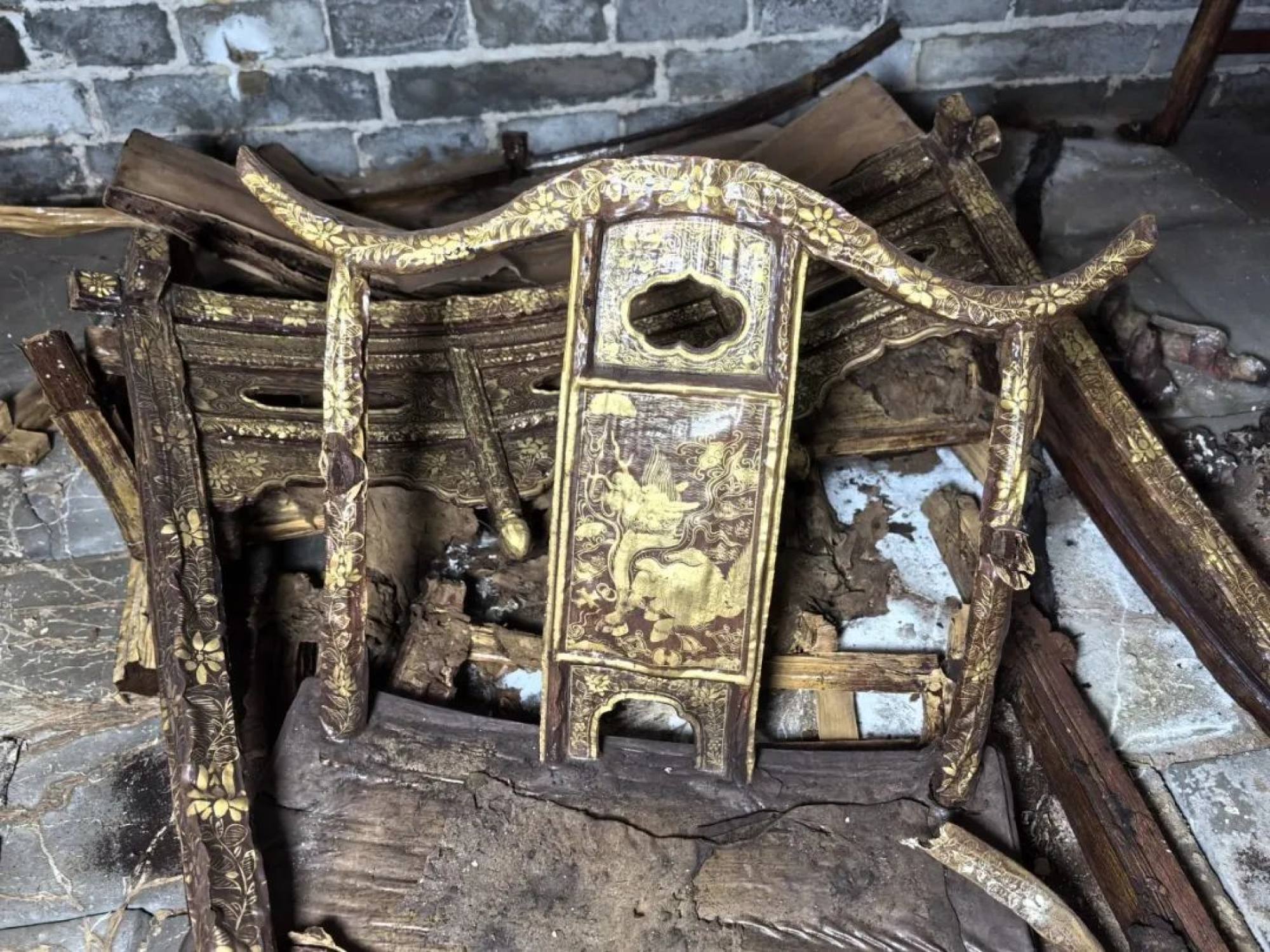
Elegantly preserved Ming dynasty tomb offers insight into power exerted by high-ranking Chinese eunuch from nearly 700 years ago
- Entrance of doorway contained elaborate engravings enticing researchers
- Eunuchs played an important role in imperial China, sometimes exerting immense influence
It would have been difficult not to have been intrigued by the entrance to a Ming dynasty (1368-1644) tomb in central China’s Shanxi province, which featured a stunning doorway with beautiful carvings of intertwining flowers bordering the entrance.
The inside of the tomb proved even more rewarding, and archaeologists revealed in early March their detailed findings of an excavation from July to December 2023.
An epitaph discovered in the tomb helped the researchers identify the tomb as belonging to Wang Luo, a eunuch who ruled the city of Xinzhou, where the tomb was found, according to the Shanxi Provincial Institute of Archaeology.
The epitaph contained useful life advice, such as, “Those who have borrowed money to become prosperous should not be arrogant, and they should change their appearance and courtesy when meeting people of all ages.”
Archaeologists think Wang was in his mid-50s when he died.
As the scientists entered the tomb, they discovered two remarkably well-preserved wooden coffins.
The larger coffin, which was painted tan and decorated with a diamond pattern, featured characters that read, “Entrusted by the Ming dynasty to serve the royal court as a palace official,” likely referring to Wang.
The smaller of the two coffins featured a motif that was decorated with paintings of flowers, grass, and peacocks that retained their eye-popping colour and details. It contained tiny inscriptions as well as patterns similar to what is typically used in textiles.
The main room with the coffins featured two niches containing intact pottery that could have held grains and oils.
In a separate room behind the tomb, archaeologists found wooden furniture meant to be buried with the deceased. It also included various plates and jars, giving the appearance that people had shared a meal in the room before leaving the tomb.

The room also contains lampstands, incense burners, tin pots, cups, dishes, painted wooden figurines, and other sacrificial items. One of the chairs still has beautiful gold-painted designs on the back post.
“The tomb was well-built, rich in funerary objects, and well-preserved wooden burial utensils and sacrificial supplies. It is rare in Xinzhou and even the entire province. It provides precious physical information for studying the local Ming dynasty tomb shape, social life, and burial customs,” wrote the scientists in an announcement about their discovery.
Eunuchs have played an important role in Chinese imperial history, first appearing during the rule of Han Huan Di (r. 146-167) from the Han dynasty (202 BC-9 AD, 25-220).
According to a 2018 deep dive from the Post, imperial eunuchs typically occupied government positions and occasionally exerted immense control over an empire’s fate.
For much of China’s history, the only men allowed daily access to the imperial family had to be castrated, giving them immense influence over the often-isolated emperors.

Becoming a eunuch required castration, which often resulted in high voices, incontinence, and weakness. But beyond the physical ordeal, it was not extremely difficult to become a eunuch, and there were 70,000 of them living in the Forbidden City when the Ming dynasty transitioned into the Qing.
Eunuchs were often coerced into their future by family members seeking financial payment for the sacrifice. But they also volunteered for the position, viewing it as a better alternative than a life of hardship they were facing.
Often, the eunuchs were trading their sexual organs for access to the emperor and the hopes that it could lead to a more prosperous and influential life.
During the Han dynasty, the emperor Guangwu allowed criminals receiving death sentences to commute the punishment if they served as eunuchs, a policy that would remain for centuries.
The eunuch system was eventually abandoned in 1924 when Puyi, the last Chinese emperor, was driven out of the Forbidden City. The last eunuch, Sun Yaoting, died in 1996.
The tomb excavation was part of a highway construction project in Shanxi last year. The archaeologists unearthed 66 tombs from the Longshan culture (3000-1900 BC) to the Qing dynasty (1644-1911).
They discovered two tombs from the Longshan culture, as well as two from the Warring States (475-221 BC). Of the other 66 tombs, they came from the Han, Tang (618-907), Jin (266-420), Yuan (1271-1368), Ming and Qing dynasties.

